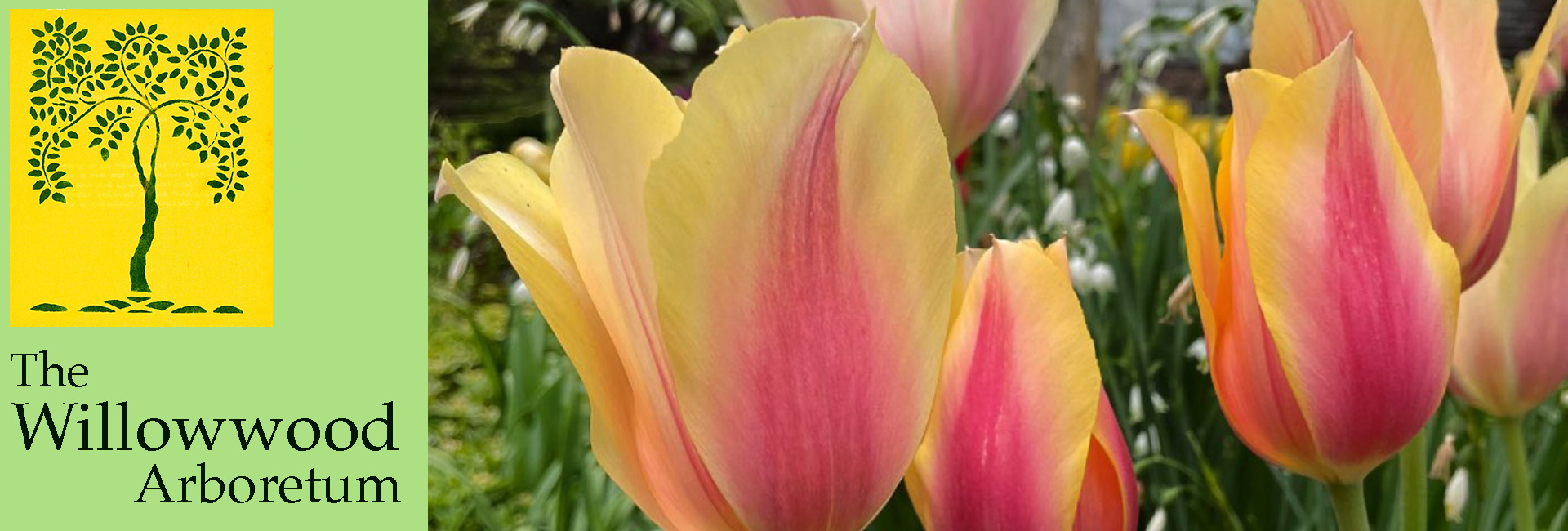August is a special month at Willowwood. This is the month that I, your author, joined the team here. It is also spectacularly alive, with the constant drone of cicadas, buzzing of bees and fluttering swallowtail and monarch butterflies just about everywhere. Willowwood is no exception, as large foraging flocks of goldfinch (our state bird!) that will greet you from the entrance will prove. As you pass the meadows, remark at the spectacular color of Joe Pye weed (Eutrochium spp.), goldenrods (Solidago spp.), ironweed (Vernonia noveboracensis) and bee balm (Monarda fistulosa) dispersed throughout.
Of course, there’s beauty in the core of the arboretum as well. Our tiny yet productive kitchen garden has kept staff plied with produce; this “Amethyst Jewel’ tomato has been a favorite. The cottage is overflowing with flowers and replete with textures and colors. Taller than most of the other plants, Lilium ‘Black Beauty’ floats above other favorites like Phlox paniculata. Various yellow asters are starting to flower as well, their color mirrored by the flowers on the vine on the fence of the cottage: Thunbergia alata. Despite the visual similarity to those in the Aster family, they are not closely related.
As you pass by the Tubbs House, spend a minute admiring the deep red spires of Lobelia cardinalis in the Cornus Mas bed. Nearly every time I pass by I see a ruby-throated hummingbird taking a good drink! In the Rockery, Clematis tubulosa, a plant not often seen in cultivation, is in flower. Not only is this an unusual time to flower, but C. tubulosa is also a non-vining Clematis, making it especially unique. The Paeonia obovata nearby, featured in June’s Bloom Report, is now in fruit. Though its flowers are fleeting, the fruit provides much more interest throughout the season as it matures and dehisces.
You may have noticed that we are largely past the season of flowering trees and shrubs. The big exception is Clethra alnifolia, “sweet pepperbush”, a common shrub throughout much of the state, and found in various areas at Willowwood. Vitex agnus-castus also bucks that trend, and is currently in flower in the Rosarie. Nearby, admire the towering spires of Silphium laciniatum, the “compassplant”, a plant that ought to be used in gardens more often!
Within the Rosarie and throughout the property you may also find Lycoris squamigera, the surprise lily, which definitely earned such a name. This bulb-forming species sends up leaves in early spring to around June, and then dies back, appearing to enter dormancy. They’re really just lying in wait, ready to steal the show! In August they return, rapidly sending up buds that open into delicate pink flowers with tinges of blue and yellow.


























